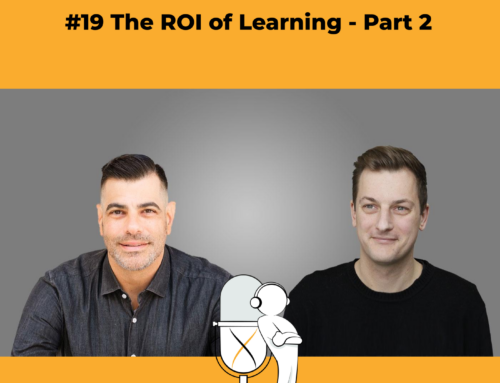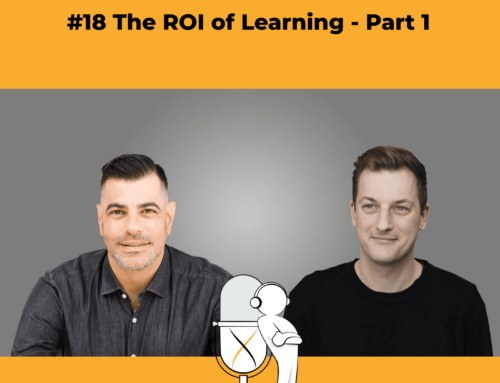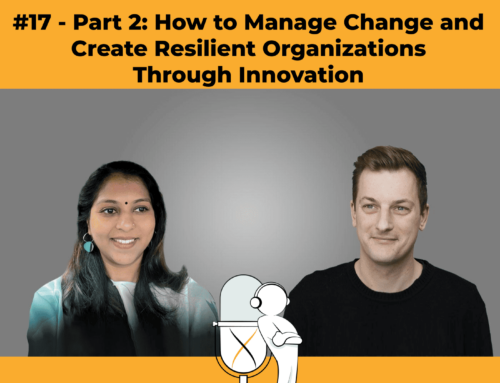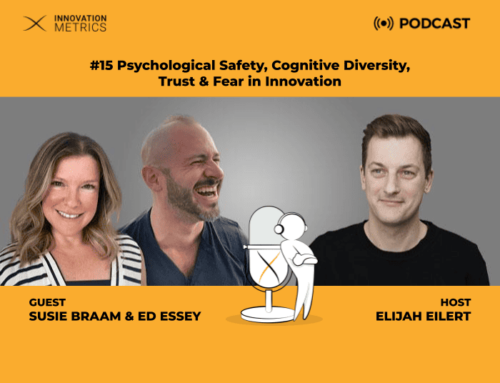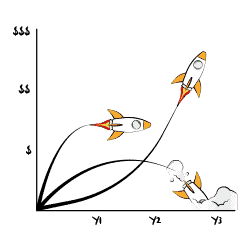Episode 16 – Part 1: How to Manage Change and Create Resilient Organizations Through Innovation
About the Episode
Elijah Eilert is talking to Kumuda Suppayah an Innovation strategist, and business transformation expert in the Oil and Gas sector.
Part 1 of the episode is designed around three main questions:
- What is innovation?
- How should innovation be measured?
- What are the biggest blockers to innovation in large organisations?
This podcast episode explores the broad concept of innovation and its various facets by drawing insights from a forthcoming journal publication. It begins by defining innovation as a departure from the norm and highlights the importance of tying innovation to specific outcomes. The discussion then delves into different types of innovation, including incremental, sustaining, and disruptive, with real-world examples illustrating their significance. Measuring innovation becomes a key focus, with an emphasis on balancing leadership’s need for certainty with employees’ concerns about potential consequences. The episode also addresses common challenges in fostering innovation within large organizations, such as miscommunication, misaligned expectations, and resistance to measurement. Overall, it provides valuable insights into the nuances of innovation in organizational settings and offers strategies for overcoming common barriers.
The opinions expressed in this podcast are those of the author/guests. They do not purport to reflect the opinions or views of the guest’s employer or its members.
Topics and Insights
[02:28] What is Innovation?
Kumuda defines innovation as doing something differently from how it is currently done. She shares her approach to explaining innovation to her own children, emphasizing change as a fundamental aspect. She discusses the importance of tying innovation to specific outcomes or goals to facilitate acceptance and adaptation.
- [04:03] Different Types of Innovation:
- Elijah and Kumuda explore the idea that innovation can encompass both large and small changes.
- Kumuda introduces three specific types of innovation:
- [04:28] Incremental Innovation
Something that often involves process improvements. Examples of time-saving changes that enhance performance and employee experience are shared. - [05:40] Sustaining Innovation:
An effort to maintain market position. Product innovation and its role in adapting to customer needs are discussed. Digital transformation is highlighted as a key component of sustaining innovation, enabling real-time customer interaction and response. - [07:11] Disruptive Innovation:
Kumuda introduces disruptive innovation as a form of innovation that disrupts traditional business models. The focus is on offering customers new and improved experiences while addressing pain points. The competitive advantages of disruptive innovation, including market expansion, are emphasized.
- [04:28] Incremental Innovation
[08:28] How Should Innovation be Measured?
Follow insights on two contrasting perspectives on measuring innovation: leadership’s desire for certainty and employees’ concerns about potential repercussions. She emphasizes the importance of implementing measurements that serve the needs of top management while also motivating employees with achievable targets.
- Useful measures are divided into categories such as input metrics output metrics or leading and lagging indicators:
- Lagging indicators are described as definitive measures that showcase the results of effort, such as revenue targets. For incremental innovation, examples of lagging indicators include time saved and increased revenue.
- The discussion briefly touches upon leading indicators for sustaining and disruptive innovation.
- The challenges in defining leading indicators for disruptive innovation are highlighted.
- Leading indicators are viewed as essential for employees to feel safe and ensure they are making daily efforts toward achieving future outcomes.
- [17:19] Balancing Employee Control and Stress:
- Elijah discusses the stress factor related to innovation teams being measured against outcomes they cannot control.
- The importance of organizations establishing appropriate measures for innovation teams is recognized.
- [18:13] Conflict of Expectations:
- Kumuda shares insights from a study about the conflict of expectations between top management and employees in the context of innovation.
- The challenge of innovation proposals not immediately committing to revenue targets is discussed.
- The miscommunication between top management and innovation drivers is explored.
- The concept of leading indicators as a means to bridge this gap is introduced.
- [20:02] Exploring Beyond the Comfort Zone:
- Kumuda hints at a paper she has coauthored, which will be further explored in episode 2 of this podcast, noting that it discusses innovation blockers. One if these blockers is labelled in the paper as ‘Exploring Beyond the Comfort Zone’.
[30:59] What are the biggest blockers to innovation in large organizations?
- Miscommunication and Mismatched Expectations: One significant blocker is the mismatch between top management and innovators. This misalignment can lead to confusion, wasted resources, and burnout among innovators. Bridging this communication gap and creating alignment between management and innovators is essential.
- Iterative Process vs. Management Expectations: Another challenge arises from the iterative nature of innovation. Innovators often need to pivot, adapt, and experiment to find the right solutions. However, management may be more accustomed to traditional, linear approaches, leading to conflicts in expectations about the innovation process. Creating a culture that accepts pivots and experimentation is crucial for fostering innovation.
- Innovation Bookkeeping: Innovators need to focus on gathering the right information at the right time and making data-driven decisions. However, many innovators resist the idea of measuring their efforts and progress systematically. Implementing innovation accounting and innovation bookkeeping, which tracks the information gathered, its impact and cost can help create accountability and trust within the organization.
- Mindset Limitations: Many innovators face mindset limitations related to risk-taking. They may struggle with taking calculated risks and admitting that they don’t have all the answers. This risk-averse mindset can hinder innovation efforts, as innovation often involves a high likelihood of failure. Encouraging a culture of experimentation and acknowledging that not every initiative will succeed can help overcome this mindset barrier.
- Lack of Clarity and Direction: When innovation efforts lack a clear goal or direction, they can become unfocused and lose momentum. Top-down-driven innovation initiatives without a defined outcome can lead to skepticism and a lack of trust in the organization’s commitment to innovation. Ensuring that innovation initiatives have clear objectives and tangible outcomes is essential for success.
- Innovation Theatre: Another challenge is when innovation is driven by hype rather than meaningful outcomes. Activities such as idea hackathons may generate a lot of buzz, but without a structured approach to implementation and measurable results, they can result in disillusionment and a perception that innovation is all talk and no action.
Addressing these blockers requires a combination of effective communication, cultural shifts, measurement of innovation efforts, and clear strategic direction. Overcoming these challenges can pave the way for successful innovation in large organizations.
About the Guests
A change catalyst and innovation driver, Kumuda Suppayah has 16 years of experience driving impactful transformations to increase performance and resilience in large organizations.
With a wealth of expertise in business strategy, digital transformations and innovation management, she has spearheaded successful initiatives across diverse industries.
Kumuda’s disruptive thinking and embrace of uncertainty fuel her ability to revolutionize conventional norms. Leading by example, she cultivates a collaborative culture that celebrates diversity and sparks creativity, propelling innovation to new heights.
Committed to continuous learning and personal growth, Kumuda’s unwavering passion for positive change shines through her latest endeavour: A collaboration with the University of Strathclyde to establish research about how organizations are innovating to forge resilient and agile business models in today’s ever-evolving landscape.
Connect with Kumuda



